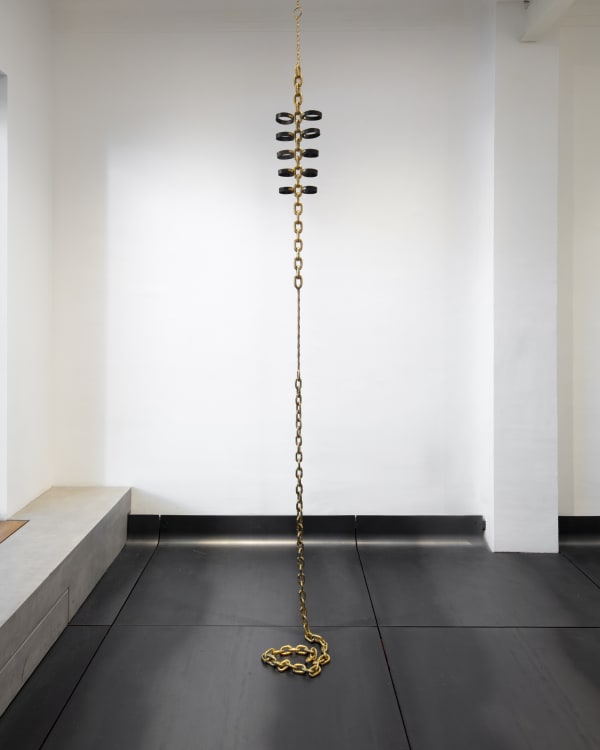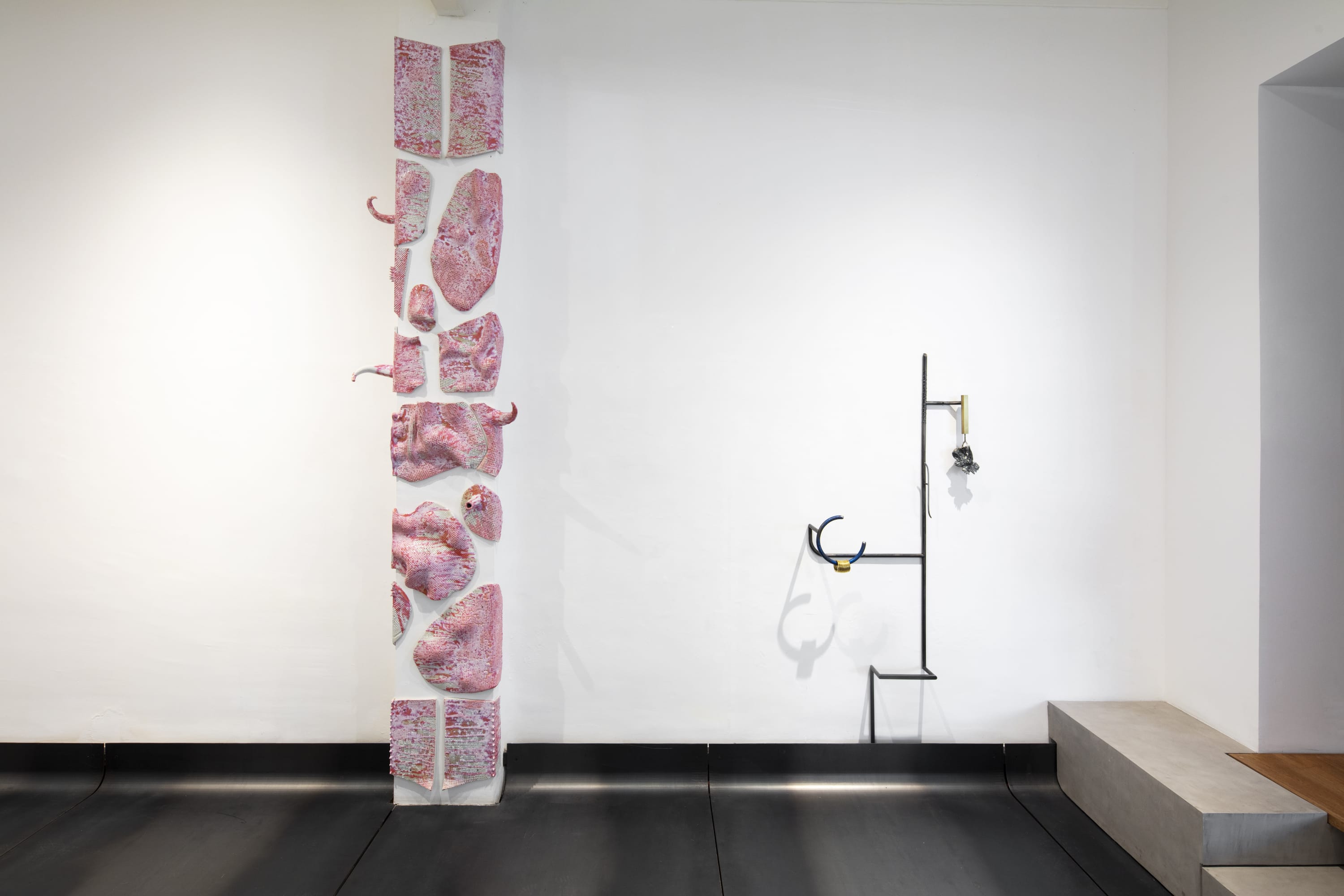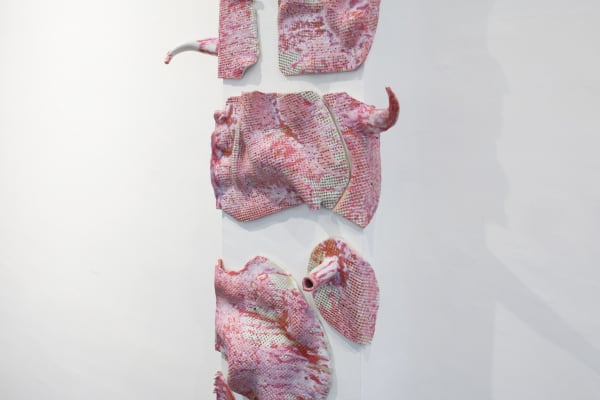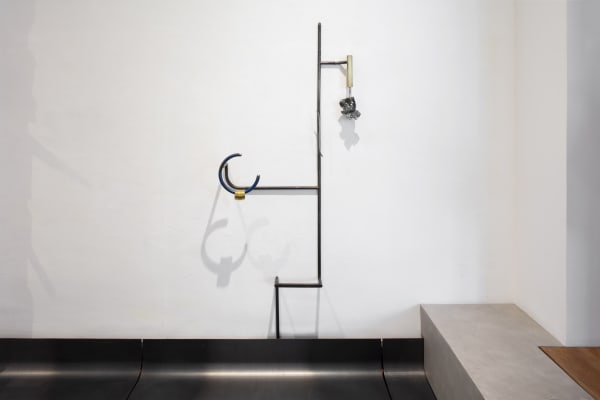-

Yerba Mala, installation view, Campeche, Mexico City. Photo: Ramiro Chaves
-

-
-

-

-
-

fig 33.1-5 yerba mala, 2021
Blackened and painted steel, glazed ceramic, cochineal on ceramic, gold and nickel-plated volcanic rock, brass, leather, horse hide, aluminum, chain, hardware
48 x 148 3/8 x 80 in
121.9 x 376.8 x 203.2 cm
-
-

-

















